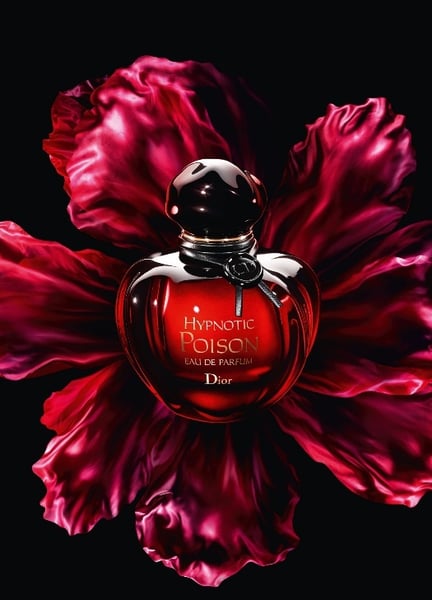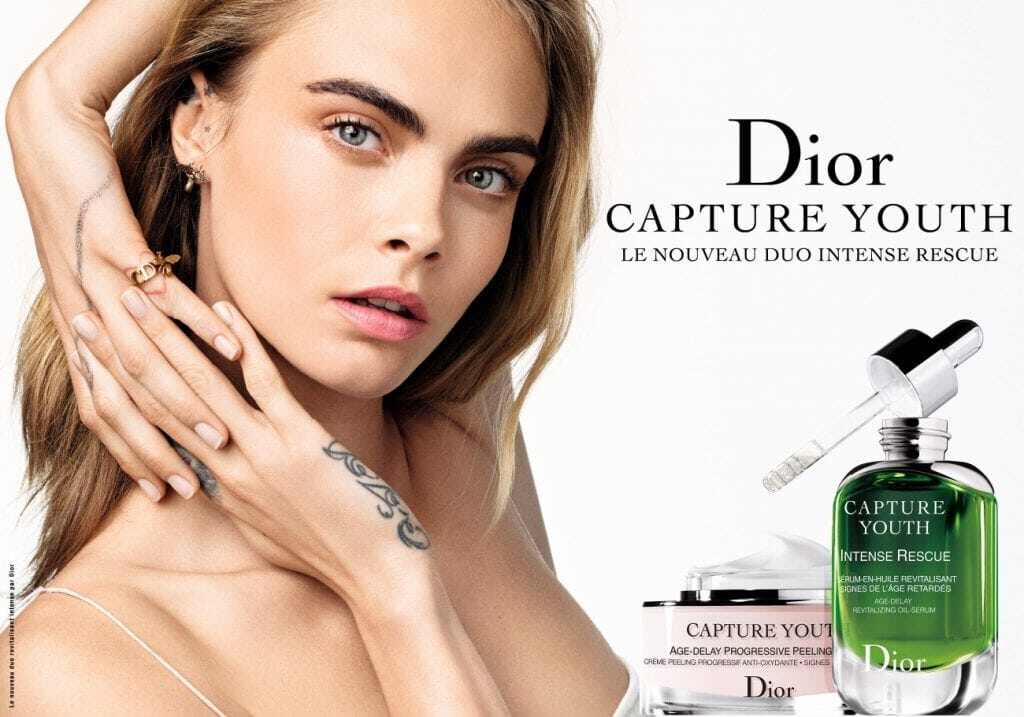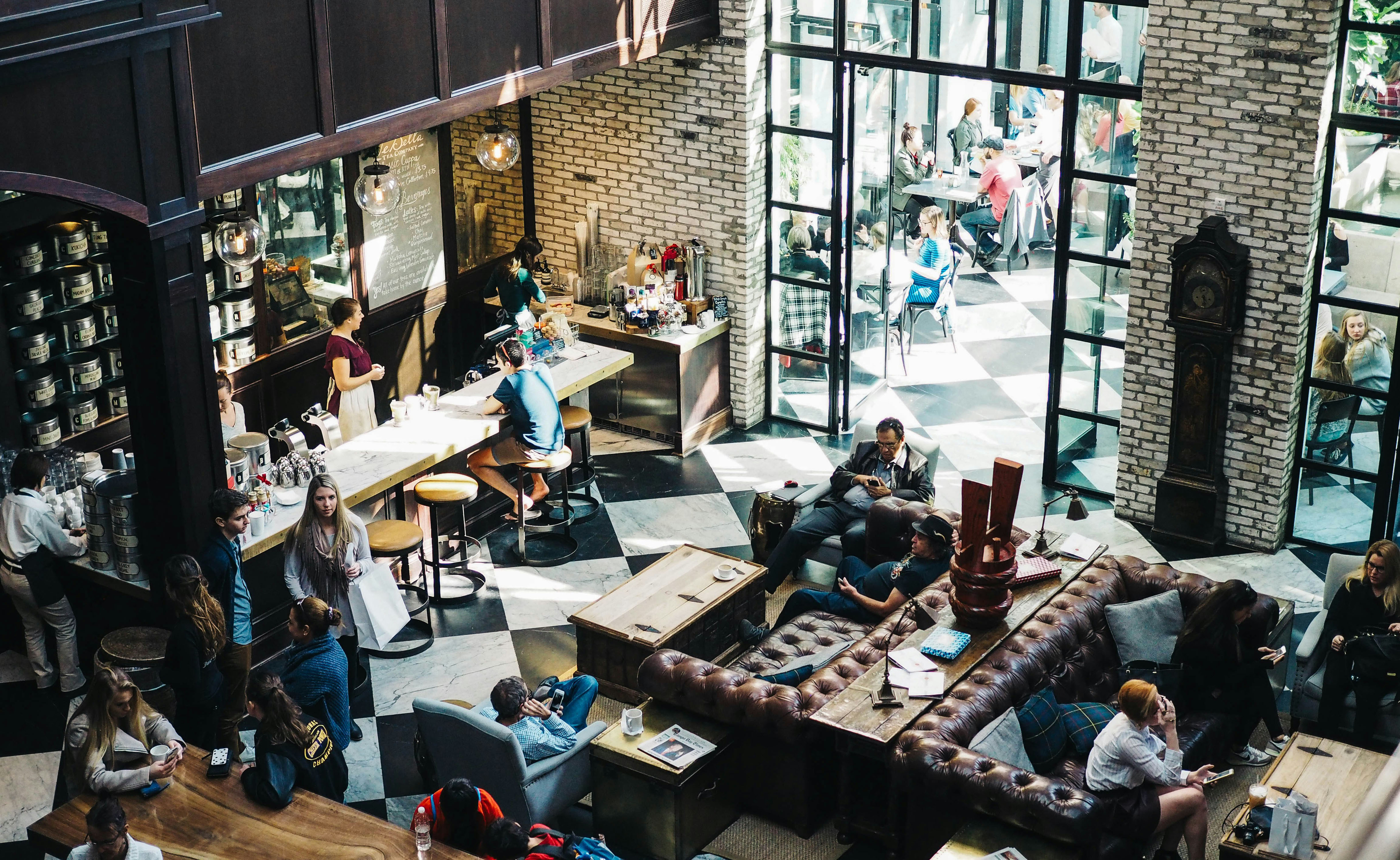Refilling is all the rage these days, and it's easy to see why. While it might not be the groundbreaking revolution that some marketing and research types claim it to be, it certainly deserves a closer look. Refills are well established in the everyday household essentials category and luxury brands have finally woken up to the opportunity. Why they are doing it and will it work are the big questions. Is it because of consumer demand, activism by brand strategists, managers and brand ambassadors, a genuine belief in environmental benefits of reduced packaging use, or is it cynical brand building?
If you've ever picked up a marketing or packaging magazine or followed some influencers, you'd be forgiven for thinking that consumers are practically demanding this change. But here's the not-so-secret truth: it's not the consumers who are driving this trend. It's the activists, a particular group of journalists, marketers, branding experts, and market researchers who are the true architects behind the refilling movement, especially in the realm of luxury products.
Refilling has been a staple in certain categories like air fresheners, home fragrances, and cleaning products for a while now. But in this discussion, we're shining a spotlight on the trend making waves in the world of luxury packaged goods such as perfumes and beauty care. From the developments so far, it appears that the category is restricting itself to the ethical and moral reasons to embrace refilling and not fully tapping into the cultural and symbolic aspects of the practice. Think about culturally rooted rituals like tea ceremonies worldwide or the modern coffee revolution, which is all about process and ritual – consumers can't seem to get enough of it. Personal care amongst women is replete with ritual and in some countries such as France, they take it to the next level.
Exercise: Browse refills in stores such as supermarkets, beauty stores, and health and wellness shops. In categories offering refills what are the differences and similarities in the main product and the refill packaging.
When considering applying refilling to a category such as perfume or beauty, ignoring the wealth of cultural and symbolic dimensions would be a missed opportunity that marketers shouldn't underestimate. So, let's delve deeper into this intriguing phenomenon. Keep reading.
“Containers are just functional objects”.
Let's kick things off with the basics: Consumer goods packaging does a whole lot more than just keeping the product safe. Think of it as the product's signature – it helps consumers spot the brand, figure out what's inside, and connect with the brand's values. Now, when it comes to crafting packaging, there's a bunch of stuff to ponder over: the shape, the materials used, how user-friendly it is, the colours, the text on it, and of course, the images and symbols.
But here's the nifty part: when that package lands on the store shelf or in someone's home, it's not just announcing product X and its benefits. Nope, it's communicating desire, aspirations, and a whole lot more. Even the most everyday consumer product carries some symbolic meaning for both the person using it and anyone who happens to witness it. Consider a group of office mates taking a lunch break at McDonald’s. They pick items off a menu that is equalising and democratic, they eat at a table and eat out of utilitarian paper containers and most likely clean up after themselves. It's like a little performance of egalitarianism and camaraderie in the theatre of consumption.
Exercise: Compare primary packaging in categories that use different materials, for example plastic vs glass in the large, bottled water category. What kinds of occasions, consumer behaviours and meanings might they affect?
So, when marketers bring in researchers, strategists, and designers to whip up the perfect packaging for their brand, they grapple with a big question: What's our packaging really going to do? Is it spinning a tale or diving into some cool concept or myth? That's the deeper level we need to explore. What's the message behind that package, beyond just holding the product?
Refilling as more than just refilling
In the Western context, the word "refill" is actually a blend of two words: "Re," which means going back to the original, and "Fill," which means to replenish or recharge. You might be thinking, "Well, who cares about the ancient roots of words?" And that's a fair point. But the fact that we use the word "refill" today suggests it continues to wield relevance. Meanings have a way of surviving the test of time. These two words got hitched back around 1680-90 to form the term we now casually toss around as "refill." It might seem pretty functional or ordinary now, but culturally, it's got some weight. Depending on where you are in the world, "refills" can carry a range of meanings – like being local, eco-friendly, honouring tradition, or just a way of life.
Consumer refilling continues to be marketed in the logic of convenience.
Refilling containers is commonplace in many consumer packaged goods (CPG) categories such as home fragrances and cleaning. The practice of going to a store with your own container is alive in all parts of the world. In Germany for example, a grocery store Original Unverpackt uses zero packaging. You bring your own bags, jars and bottles to take home your pasta, lentils, spices, oils. If you don’t have one, you can buy from their selection of glass jars, cotton bags, metal boxes, and bottles. You can even decant oils and vodka into bottles. According to Mpulse you can now find over 20 such stores across Germany (Link).
Other examples include fresh milk vending in Europe. You can take your container to machines across Switzerland, Italy, France, Austria, Slovenia and UK, which might come as a surprise to some.
Water refilling is quite prevalent in East Asia, Japan in particular. You can use the Mymizu app to locate water fountains or restaurants that will refill your bottle.
In many parts of Asia, it is common practice to carry your own bags and bottles to buy provisions from your local store.
In South East Asia, China and India you can find use of historical artefacts such as tiffin boxes. Loved ones pack lunch or food for farmers and travellers. In Indonesia it is called the Peranakan tiffin box and in India you have the ubiquitous dabbas, brass tiffin boxes, now replaced by stainless steel boxes. It is a practice that is continued till this day.
Exercise: Pay attention to reusable containers that individuals around you use - from bottles to food boxes. How are they similar or different. Talk to their owners and ask them about how they use it, take care of it, their feelings and emotions if they have ever temporarily misplaced it. You might be surprised at the emotions that people attach to objects.
To refill is to sustain or give life
Refilling a container is like a nod to life itself. It's a symbolic act that's brimming with the essence of existence and creation. It's no wonder that all around the globe, we find timeless examples of refilling linked to natural stuff like milk, water, and food. Take tiffin boxes, for instance; they're commonly used in Southeast and South Asia to carry food for later, and they signify provision and care.
One of the most universal symbols of filling and refilling is wine. Wine is basically the essence of grapes. It starts its life in containers like barrels or bottles, sometimes gets poured into fancy decanters, and ultimately finds its way into our glasses. Each step is a part of the art of filling and refilling. And yeah, I get it, there's this whole "wine in a bag" thing now. It's got its reasons, like changing demographics and economic factors, but it's worth noting that every modern trend of convenience is offset by another trend rooted in heritage, tradition, or craftsmanship.
Now, let's talk about the practical side of refilling. Stuff like filling up your car with petrol (or gas), refilling your pen with ink, or even those moments when a waiter tops up your wine glass at a posh restaurant. But here's the thing – every refill can conjure up a range of scenarios with deep symbolic significance. Refilling your car tank or recharging your EV is all about the journey ahead, and journeys are packed with layers of meaning. Every journey story carries themes like transformation, wisdom-seeking, moral dilemmas, redemption, adventure, and resilience. Just take a look at Joseph Campbell's "The Hero with a Thousand Faces" or Vladimir Propp's "Morphology of the Folktale." No wonder films like "The Lion King," "Mulan," "Moana," and "Frozen" are blockbusters. They tap into a deep human desire for these symbolic meanings.
Exercise: Ask friends about their memorable long journeys on road via car. Did they plan where they would refill. What was the anticipation of the journey. What were their reflections during the refill break?
So, when you're at a restaurant on a laid-back weekend afternoon and you pay for unlimited drinks, it's not just "refilling your drinks lunch." Nope, it's called a "bottomless brunch," and that term suggests it's a wellspring, a source of life itself.
Luxury Communist Refilling
Luxury cosmetics, fragrance and personal care brands have jumped into the refill game. It is received wisdom that Gen Z is the most environmentally conscious generation (Creative Brief) and consequently brands are falling over each other to appeal to them. Yet, the very symbol of environmental excess, ultra fast fashion is popular amongst the generation. Brands such as Shein, Pretty Little Thing, BooHoo, Missguided are most popular amongst Gen Z (Vox, Business of Fashion). We're not here to brush off Gen Z. It's more about recognizing that there's a pretty big difference between what most folks think and what the actual numbers are telling us. In the luxury beauty and fragrance space brands are chasing Gen Z with both aesthetics and sustainability. Rabanne (Financial Times) and Prada (Glamour Magazine) are targeting Gen Z and refills are a part of this play. Body Shop made a major pivot to millennials and Gen Z but it appears it was not good enough as they head to a sell off (Telegraph).
Prada has launched Paradoxe, a new perfume range with a refill bottle. Emma Watson, considered a Gen Z icon fronts the brand and is believed to have directed the video for the fragrance’s campaign (Youtube) and features in a tutorial helpfully explaining how to refill a perfume bottle (YouTube). In the instructional video, Emma Watson isn't really trying to convince her audience about the eco-friendly value of perfume refills; it's more like you’ve got to have a thing for those fancy bottles and shouldn’t let go of them because they look so good. Commodity fetish as its finest and a very subtle appeal to Gen Z - Fair play! Well, you see, Gen Z doesn’t appear to be in the market for keepsakes. Maybe this product isn't really targeting the shoppers who frequent places like Shein. Then again, maybe some of them do shop at Boohoo and Missguided and still like to switch up their perfume choices from time to time. Ultimately the kind of consumption some people think should be avoided is exactly what consumers engage in. It’s a very messy world consumer behaviour. A paradox indeed.
Some thoughts on Luxury and refilling
Luxury goods draw heavily from symbolic codes of divinity such as salvation. Perfumes and fragrances are central to all religious rituals. They play an important part in the symbolic and literal purification of humans and convey life. Adverts for perfumes often code heavens, purity, otherworldliness, bliss, ecstasy. The signs and symbols often include bright light, water, the meeting point of earth and the sky, feathers, gardens and flowers. Astute cultural observers know that we understand the world through binaries and the obvious choice for product differentiation would be the opposition to heaven that is decadence, or the devil/hell. It is symbolised by various signs and symbols including black, red, serpents, fire, smoke. Without getting into a thesis about the semiotics of perfumes and luxury, it suffices to say that recycling or refilling acts as a bridge between death and new life. What we breathe life with and life into has deeper meanings, which refilling misses.
While individual perfumes, their communication and equities such as packaging carry a lot of symbolic weight through detailed signs and symbols, the refill packaging as well as the entire experience of decanting betrays the wealth of meanings associated with each of the perfume bottles. Bottles themselves have an important role in giving meaning to its contents. Mugler Angel and Prada Paradoxe bottles (star and triangle) carry deep symbolic meanings of life, strength, fertility, divinity amongst others. Bottles or containers are hermetically sealed to convey potency and purity of the contents and refilling betrays both the two values. Given the common shape employed by most refills, it also betrays uniqueness of the contents. If after all, the refill bottles look and perform the same, their contents must be same as well.
Perfume brands pay considerable attention to signs and symbols they use to differentiate themselves. Yet, refills visually look like a commodity product, with no distinct features except for the brand name. How might this be influencing brand perception and experience?
Smells of Luxury Communism
In the Soviet Union, soda water vending machines were quite a unique sight. Picture this: folks patiently lining up, sticking in a kopek coin, and sipping soda from a shared glass – a true communal experience that reflected the spirit of those times (Russia Beyond). Apparently, nobody got sick. Everyone loved it, unless of course you wanted to be sent to the gulag or cultural re-education camps. Pepsi got into the act as well – in 1980, they struck a barter deal with the Communist Party to bring in Pepsi fountains, still using that communal approach. It's a bit of an eyebrow-raiser, right? This unlikely partnership between a capitalist brand like Pepsi and a communist regime added a fascinating layer to the era's history, showing how capital can bend to ideology when it comes to consumer behaviour and branding.
Conclusion and recommendations
While sustainable consumerism is a laudable goal and refilling is one amongst the solutions to achieving this, it does not work in certain categories. Every act of consumption is social and has symbolic meaning. Luxury goods such as perfumes tap into a more complex matrix of emotions, affect and socio-cultural myths. The simplistic approach of providing refills to perfumes does little for the brand except being a box-ticking exercise in appealing to a demographic. Gen Z is not a hallowed generation and it is unfair to project the burden of transformation of consumer culture on to them. Refills in generic containers make sense when applied to every day consumption objects where our emotional investment may be lower - such as cleaning, home fragrance products or the non-premium consumer categories. At the same time, it is highly unlikely that one of the popular consumer products such as Coca Cola will succeed selling their drinks as a concentrate that you mix into carbonated water at home or on the move. Drinking a coke is not just about the concentrate diluted into a liquid but about the brand equity - the iconic shape of the bottle and the label on it, the graphic design on the can, the familiar hiss and fizz when they are cracked open -- all these add up to drinking the real thing and being a part of an egalitarian and communal experience of happiness. Luxury goods are not about egalitarianism, but about difficulty in acquiring it (price or scarcity), specialised knowledge about the product and ways to consume it (expertise and knowledge) and serving only the person who buys it (exclusivity and individual expression).
Create a holistic design philosophy that unifies the product’s primary packaging and the refill packaging.
Brands need to create a holistic design philosophy that ensures that the visual equity is continuous. Except for the brand name and the colour, the refill bottles for perfume betray these basic criteria of luxury goods. They erase all the semiotic markers of the brand, which is embodied in the wonderful form and colours of the bottles. You just can’t beat the design of Paco Rabanne Fame or Chanel No 5. Yet, only Chanel No 5 manages a unified semiotics of both the primary and refill packaging.
Fame's refill container vs No 5's. Which one reinforces the brand experience.
Notice how the Unscented Company refill bottle and dispensing container maintain consistency in the brand whether the main product or the refills.
When creating a new product (such as Prada Paradoxe) use the opportunity to innovate in the entire packaging design incorporating innovative designs such that the primary and refill packaging are one and same and offer unique rituals
Kankan's range of personal care products make the refill part of the primary product packaging. They take the ritual of opening a can of food, cola, or beer (associated with freshness and anticipation) into the primary product itself.
In addition, there must be an element of ritual that the consumer engages in, which taps into the codes of containers and their containers, being hermetically sealed, and the opening of which involves tactile and affective elements. Kankan London makes the refill the part of the product experience itself. You buy the reusable pump which is attached to the refill container.
Want to know more?
To learn more about how semiotics can be used, read the article 'Semiotics and culture: Signs, symbols and their meanings for insights and marketing'




